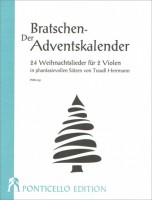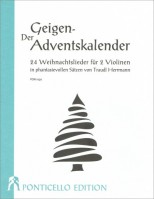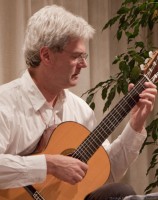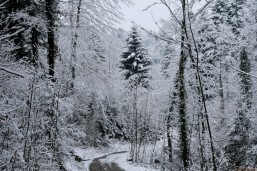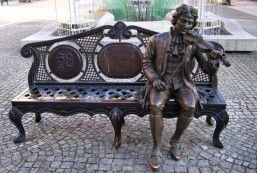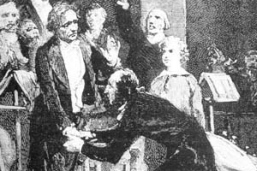
Passion On Ten Strings |
A remarkable premiere of a composition for viola and guitar, written by Rudolf Kelterborn
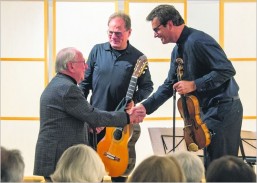
musicians Nicolas Corti (viola) and Han Jonkers
(guitar) on the world premiere of his work at the
Music hall of the music school Riehen, Switzerland.
Photo: Véronique Jaquet ©Riehener Zeitung
On Sunday, October 21, an extraordinary concert took place as part of the Sarasin Concerts at the music school Riehen. Nicolas Corti, viola and Han Jonkers, guitar, performed works for this rare line-up. The concert was well attended by a diverse audience of kids and young adults, all listening to the performance of the two artists.
The president of the music school, Claudia de Vries, introduced the two artists, as well as the composer Rudolf Kelterborn who was present, and who’s premiere was the reason for this concert. His work was the only one in the program that was originally written for this line-up.
The musicians started the concert with a Cantabile from violin virtuoso Paganini, who had also played guitar. Corti enchanted the audience from the very beginning, with the fine tone of his viola and his wonderful phrasing of the melodies; Jonkers convinced as sensitive accompanist.
Rudolf Kelterborn’s Duet for Viola & Guitar was written in 2018, based on a suggestion by Corti and Jonkers. Following the lovely, melodical Paganini, various sounds and rhythms took the spotlight. The musicians were challenged to use many difficult extended techniques. Kelterborn on his composition: “The work in one movement may be compared to a journey from A to B: Through changing (musical) landscapes, with alternative routes and points of rest. Anybody who listens may imagine his/her own phantasies and stories – however my own ideas are not based on visuals or narratives, but on music.” Plenty of applause for the performers and the composer.
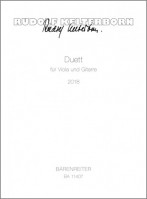
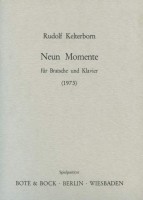
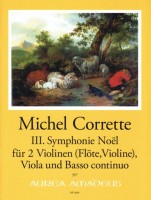
Schubert composed the Sonata in three movements “Arpeggione” based on a suggestion of the well-known instrument builder Stauffer (Vienna) for the instrument with same name and piano. The Arpeggione is a historical instrument, a bowed guitar with frets on the round shaped fingerboard. Unfortunately, this sonata remains Schubert’s only composition for these instruments, says Jonkers. The performers did an excellent job interpreting this work. The solo passages for guitar too were well presented. Ravels slightly shorter, however beautiful Pièce en forme de Habanera might have felt slightly displaced next to the other, longer compositions of the evening.
Café 1930 and Bordel 1900 from Histoire du Tango by Astor Piazzolla, originally written for flute and guitar, were the perfect choice to end the concert. Corti and Jonkers presented a musical firework with their rhythmical precision and great taste for effective interpretation. The encore was a melancholically beautiful Milonga of the same composer. Viola and guitar sounded equally well in the acoustically great concert room. The volume balance was solid, even for the quiet guitar harmonics, which were audible even in the back of the room.
Concluding the performance, I can’t understand the lack of original music for viola and guitar. We are grateful for Rudolf Kelterborn’s Duet for viola and guitar, for the two musicians and their successful concert performance.
| This might also be of interest to you |
» To the viola blog
Hector Berlioz - Harold en Italie: This work by Berlioz is of outstanding importance for the viola. Especially since there was hardly any remarkable literature for the viola at the time of its creation. It was not until 1838 that Paganini heard his commissioned work. Overpowered, he pulled Berlioz onto the stage and kissed his hand on his knees.
» To the viola blog
|
Viola news letter |
 Do you don't want to miss any news regarding viola anymore? Our monthly viola news letter will keep you informed.
Do you don't want to miss any news regarding viola anymore? Our monthly viola news letter will keep you informed.» Subscribe to our viola letter for free
|
|
 Visit and like us on Facebook.
Visit and like us on Facebook.» Music4Viola on Facebook
